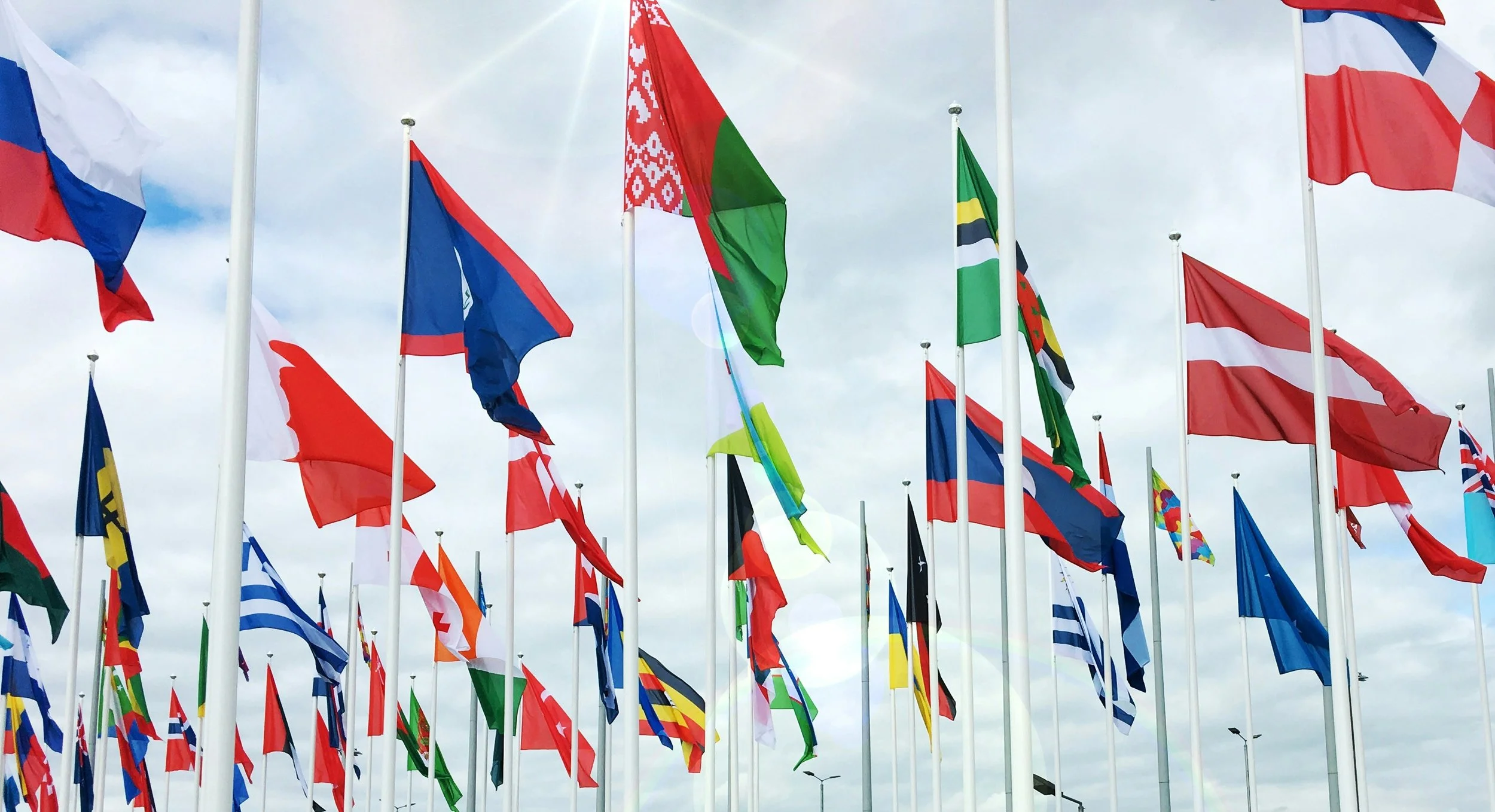Beyond Revenue: Why International Students Are Mission-Critical
Joseph Wong is a Professor in the Department of Political Science and serves as the Vice President, International, for the University of Toronto.
He was the Ralph and Roz Halbert Professor of Innovation at the Munk School of Global Affairs & Public Policy through June 2023.
CRI:
The federal government’s recent changes – caps, PALs, visa tightening – have reshaped international recruitment. From your perspective, what are the most significant long-term implications for Canadian universities?
Joe:
I don’t think there will be serious long-term implications – at least, not if we take action now to correct some of the short-term, and frankly unanticipated, damage to Canada’s international brand, particularly as it relates to higher education and universities.
There’s a general recognition that the federal government’s goal – to manage the inflow of international students – made sense. Especially when the previous government’s immigration Minister highlighted the more questionable institutions that were drawing in the vast majority of these students. That drew a fair bit of reasonable understanding.
But as many have pointed out, this situation likely required a more precise set of interventions. Instead, what we got felt more like a blunt instrument – what you might call a bludgeoning – applied across the entire sector. The hope is that Canada – and the new federal government specifically – will course correct.
So I’m hopeful this won’t lead to long-term damage. That said, I think we need to move quickly to make some of those adjustments. This is actually a powerful moment for Canada, and one that our new government seems poised to seize. With everything happening south of the border, this is when Canada’s brand should be shining even more brightly.
We should be building on our authentic history of welcoming immigration and being a place that’s open to talent. That lines up with what Mark Carney is emphasizing right now – Canada as a global talent hub. Not only contributing to but benefiting from global talent flows.
So my hope is that we’ll see some alignment between those broader national goals and the role that the university sector can play in supporting them.
International students are absolutely central to what makes our universities great. For now, it’s really about managing the short-term hit to Canada’s brand. And I remain optimistic.
CRI:
It’s a very competitive landscape right now. Many universities are aggressively pursuing international students. How does U of T differentiate itself, and what lessons could smaller institutions take from that?
Joe:
Well, U of T obviously benefits from certain advantages that reflect our size, our location, and our global profile. We’re consistently ranked among the top 15 universities in the world for employability, according to both public and private sector employers. That’s a huge selling point for international students. Their families want assurances that their kids are going to get great jobs.
The fact that U of T ranks among the top universities in the world – anywhere between 15 and 25 – puts us in very strong company. That global ranking gives us an advantage, and we’re lucky to benefit from that.
The fact that we’re in Toronto – one of the most attractive city regions in the world, diverse, multicultural, welcoming, the engine of Canada’s economic growth – those are all things that work in our favour.
But beyond those advantages, which may not translate into clear lessons for smaller institutions, I think one thing that really sets us apart is the support we’ve put in place for international students. We’ve made real investments – not just in academics but in personal growth and wellbeing.
We offer 24/7 health access, including multilingual services. We have a first-year housing guarantee, which is a big deal in a crowded housing market. Our immigration advising team has grown almost fourfold in the last decade. And that’s because we know how critical it is to support students as individuals with unique circumstances.
I always stress this: we talk about large, aggregate numbers – like 6,000 international students – but the reality is that means 6,000 individual circumstances, 6,000 stories, 6,000 challenges and opportunities we need to work through.
Our immigration advisors work one-on-one, handling thousands of emails, thousands of appointments. They support prospective students as individuals.
And I’m proud that, by academic measures, our international students do as well – if not better – than our domestic students, who are already among the very best this country has to offer.
We’ve also invested heavily in what we call the International Student Experience Fund. Over the last five or six years, we’ve put millions into seed funding for our divisions to experiment with new ways to support international students – everything from orientation programming and academic language training to how dorms are designed for intercultural living.
The last point I’ll make is that international students are absolutely mission-critical. I’m not just the Vice President International – I’m also a professor. In fact, I just had the first session of my honours seminar yesterday. Out of 25 students, eight were international – from the U.S., Venezuela, India, China, Luxembourg.
They all bring extraordinary life experiences that reshape how we teach, how we learn, how we do research. They enhance the experience for everyone. And I think recognizing, appreciating, and talking about that is something all universities could be doing more of. We’ve made a real effort at U of T to invest in that narrative.
CRI:
So, what are we still underestimating as a country when it comes to supporting international students after they arrive?
Joe:
It’s a good question. A lot of it is learning by doing – there’s no textbook for this. For some universities, international recruitment is relatively new. At U of T, we’ve been at it for decades.
But even for us, it’s about listening – really listening – to our students, both undergraduate and graduate. It’s understanding what specific needs they have and recognizing that we need to make investments in those areas.
So it’s everything from how we deliver healthcare, mental health services, how we build community on campus, how we encourage students to participate fully in co-curricular life – to really feel like full members of the university community.
One data point I often highlight: international students are actually more engaged in our high-impact co-curricular activities than domestic students. But that doesn’t happen by accident – it takes intentional programming that’s appealing and inclusive.
Ultimately, enrolling international students is only step one. Helping them thrive over four years – or however long they’re here – is a whole different challenge. And that requires sustained, thoughtful effort.
CRI:
Your work with the Reach Alliance really shows how critical inclusive innovation is. How do those principles apply to international education? How do we move from numbers to sustainable, mutually beneficial relationships?
Joe:
For those unfamiliar, the Reach Alliance is a research initiative I lead as principal investigator. It’s part of my academic role, and it’s deeply connected to the same principles driving internationalization at the university level.
Universities are where the next generation of leaders and innovators are formed. This is the time for them to ask big questions and take risks. I always tell my students: we’re here to underwrite your risk. You’ll never have more support to take bold swings – moonshots, if you will.
Now, when you involve international partners – faculty and students – it expands the canvas. These students are playing on a global field. The ideas they work on here might be implemented in South Africa, Ghana, Australia – anywhere.
So the impact of a university that embraces internationalism is global.
CRI:
So the big picture question: in five years, what will separate the universities that thrived during this volatile period from those that just survived? What’s the most important strategic bet institutions should be making now?
Joe:
A big part of what’s helped U of T during this period of volatility – and these geopolitical headwinds – is that we invested in the diversification of our international student body years ago.
We recognized early on that we couldn’t depend on any single country. It’s too risky. And it goes against the whole point of internationalization – which is to bring global diversity to campus.
So we made the investments. We rigorously track where we’re building pipelines, where we’re growing our profile, where we’re present in high schools around the world. Years ago, there were just a handful of countries we could count on. Now, we’ve more than tripled that. It’s taken time, effort, and market-specific strategies, but it’s paid off.
That’s one key differentiator.
The other – and I’ve touched on this already – is changing the narrative. Too often, international students are seen simply as revenue. And I think that’s damaging and unfair.
These students are courageous. For many, it’s their first time on a plane. They’re 18 years old, landing in a country they’ve never been to before. Reducing them to a revenue stream is deeply unfair.
The institutions that thrive over the next five years will be the ones that genuinely value international students – not just financially, but as part of their academic core. That’s something we take seriously at U of T, and I believe it’s what will make the difference.
Want to see how CRI helps Canadian institutions grow revenue through optimizing international tuition?
Call us at (514)-250-4495 or let us reach out.
“Don’t push people to where you want them to be - meet them where they are.”


